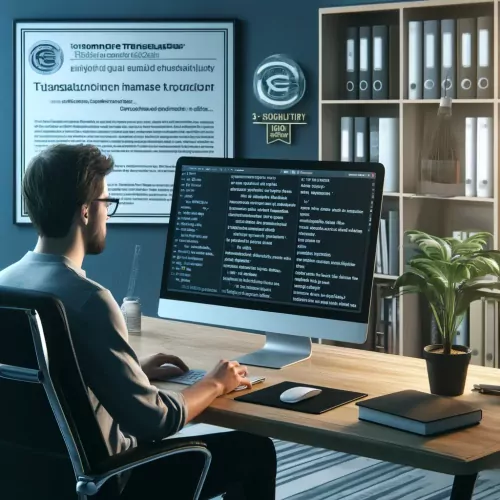
In today's globalized world, effective communication across languages is more critical than ever. Businesses, governments, and individuals alike need accurate translations to bridge cultural and linguistic gaps. This need has given rise to various translation methodologies, with machine translation post editing (MTPE) emerging as a significant innovation. But what is MTPE? What does it entail, and why is it becoming so popular?
MTPE meaning stands for Machine Translation Post Editing. This process involves a human translator reviewing and refining the output generated by machine translation systems. While machine translation (MT) tools, such as Google Translate and DeepL, have made significant strides in recent years, they are not infallible. They often produce translations that, while understandable, may lack the nuance, accuracy, and context required for professional use. This is where MTPE comes into play, blending the efficiency of machine translation with the expertise of human translators.
The Role of Machine Translation Post Editing
Machine translation post editing bridges the gap between raw machine translations and the high-quality translations needed for professional and commercial purposes. It leverages the speed and cost-effectiveness of machine translations while ensuring the output meets the required quality standards. The process involves several key steps:
- Pre-Editing: Preparing the source text to improve the machine translation output. This might involve simplifying complex sentences, removing idiomatic expressions, and ensuring terminological consistency.
- Machine Translation: Running the pre-edited text through a machine translation engine.
- Post-Editing: Human translators review and refine the machine-generated translation, correcting errors in grammar, syntax, and meaning, and ensuring the text reads naturally in the target language.
There are two levels of post-editing: light post-editing and full post-editing. Light post-editing focuses on correcting only the most critical errors, making the text understandable but not necessarily perfect. Full post-editing, on the other hand, aims for a high-quality translation, addressing all aspects of the text, including style and tone.
The Advantages of MTPE Translation
MTPE translation offers several benefits over traditional translation methods. First and foremost, it significantly reduces turnaround times. Machine translation engines can process large volumes of text in a fraction of the time it would take a human translator. By combining this speed with human expertise, translations can be completed much faster.
Cost efficiency is another major advantage. Machine translation reduces the amount of manual work required, lowering the overall cost of translation projects. This makes high-quality translations more accessible to businesses and individuals with limited budgets.
Furthermore, MTPE enhances consistency. Machine translation engines use extensive databases of previous translations and linguistic rules, ensuring consistent terminology and phrasing throughout the text. Human post-editors then fine-tune this output, ensuring accuracy and fluency.
Ensuring Quality: ISO 18587
Quality is paramount in translation, especially for business, legal, medical, and technical documents. To standardize the quality of machine translation post editing services, the International Organization for Standardization (ISO) introduced ISO 18587. This standard outlines the requirements for the post-editing process, ensuring that translations meet high-quality standards.
ISO 18587 specifies the competencies required for post-editors, the processes they should follow, and the quality management systems that translation service providers should have in place. By adhering to this standard, providers can guarantee that their MT post editing services deliver reliable and accurate translations.
The Future of Translation: MTPE
The rise of MTPE is transforming the translation industry. As machine translation technology continues to improve, the role of human translators is evolving. Rather than being replaced by machines, translators are becoming editors and quality controllers, ensuring that machine-generated translations meet the necessary standards.
This shift is leading to new opportunities for translators. Mastering MTPE requires a combination of linguistic skills and technological proficiency. Translators who can effectively use machine translation tools and apply post-editing techniques are in high demand.
Moreover, the integration of artificial intelligence (AI) and machine learning into translation tools is enhancing their capabilities. These technologies enable machine translation engines to learn from post-editing corrections, continually improving their output. This symbiotic relationship between human expertise and machine efficiency is driving the future of translation.
In conclusion, MTPE represents a significant advancement in the field of translation. By combining the speed and efficiency of machine translation with the precision and nuance of human editing, MTPE translation delivers high-quality results faster and more cost-effectively than traditional methods. Adhering to standards like ISO 18587 ensures that these services maintain the highest quality, providing reliable translations for a wide range of applications.
As technology continues to evolve, machine translation post editing will play an increasingly important role in global communication. For translators, mastering MT post editing is essential to stay competitive in this dynamic industry. Embracing these advancements will not only enhance their skills but also open up new opportunities in the ever-expanding world of translation.








